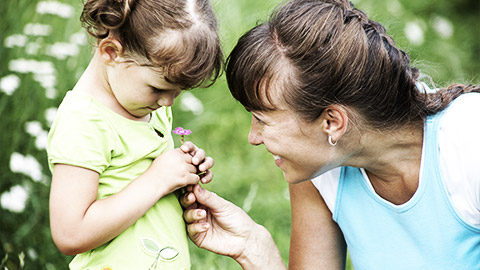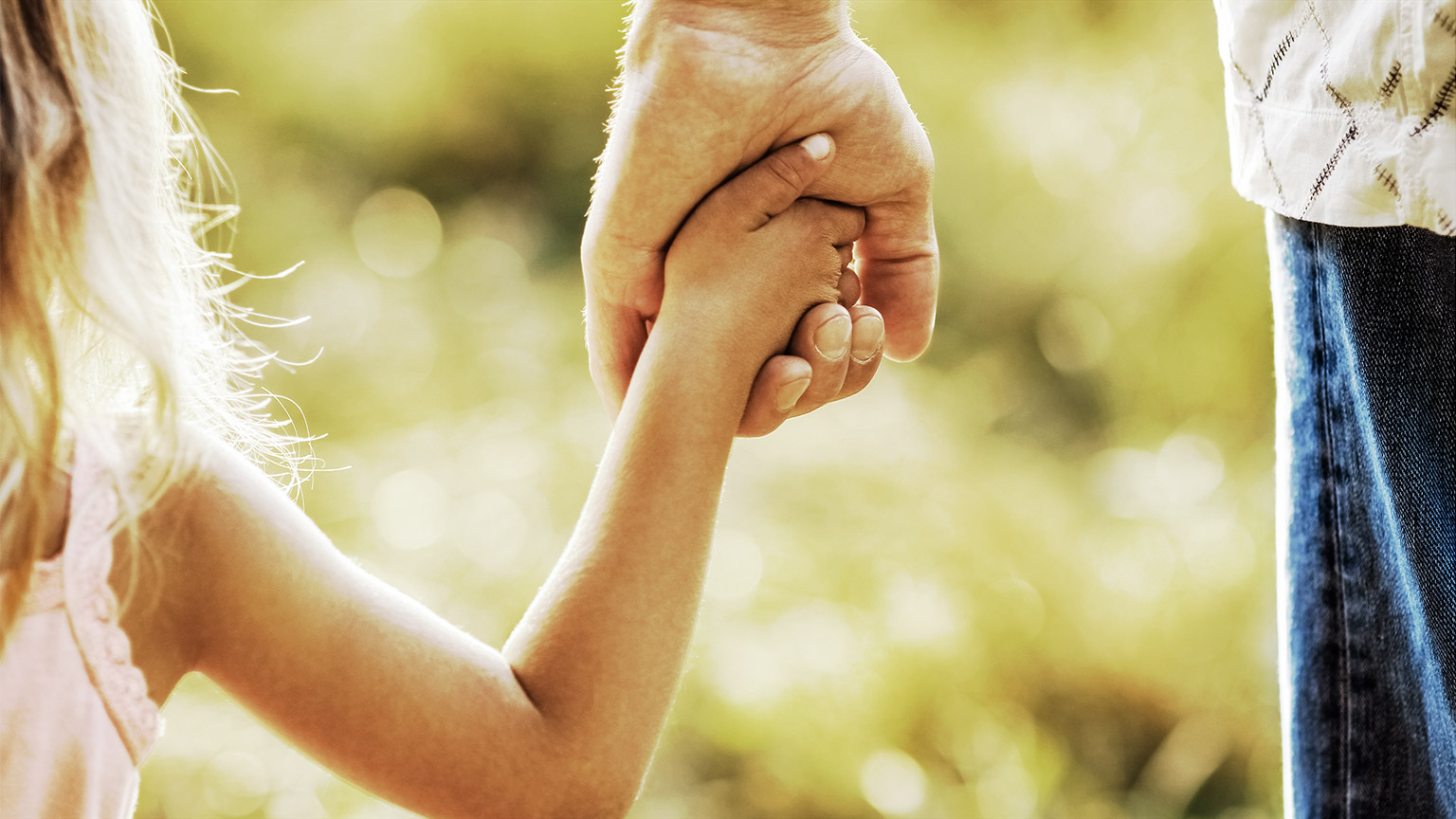This chapter looks at how to respond to potential abuse and harm, including what to do when there is an immediate risk of harm. We will discuss the procedures and guidelines for reporting potential abuse and harm, the statutory requirements and the ethical issues in reporting and notifying.
By the end of this chapter, you will understand:
- Your general responsibilities for responding to the immediate risk of harm
- Statutory requirements for reporting your concerns
- Ethical issues in reporting
- Responding to children who disclose abuse
- The skills needed for reporting concerns
Some examples of abuse are:
- Physical
- Sexual
- Psychological
Let us look at a short video to explain what is abuse and neglect.
How you respond to situations where a child or young person may be at risk will depend on your job role and responsibilities, the requirements of child protection legislation for your state/territory, and your organisation’s policies and procedures.

Unless you are specifically employed in a child protection capacity, your role will almost certainly be confined to identifying signs and indicators of risk and harm and reporting these to your supervisor or to the relevant child protection authority. Workers from the child protection authority will then take responsibility for carrying out any further investigations and for dealing directly with the situation.
If the child or young person is in immediate danger or needs immediate support because their safety is at risk, you should contact the emergency services immediately before informing your supervisor.
Note
If a child or young person is in need of medical treatment or first aid, providing this support or referring them to an appropriate service will be your responsibility, as it would if a child had been harmed in your workplace. Always follow your organisation’s policies and procedures. Remember that as an early childhood educator you are a mandatory reporter. Refer to the policies and procedures of your service for more information of reporting guidelines. As well if you feel that your management has not dealt with the issue correctly, you can make a report.
Immediate Responses
As an immediate response to a child or young person in need, check whether there are any physical injuries that need attention. If there are, provide first aid or refer the child or young person for medical treatment. Your organisation will have policies and procedures for doing this.
If the child or young person is in distress, respond by providing emotional support (again, within the boundaries of your organisation’s policies and procedures). Use active listening and empathy; remain calm; and avoid making judgemental comments.
As soon as is practical, report your observations and concerns to your supervisor and discuss what action should be taken next.
Case Study
Please see below an extract from the Child Protection Policy from the Little Ly intranet.
CHILD PROTECTION PROCEDURE
Management will:
- Ensure the nominated supervisor of the service and any certified supervisor in day to day charge of the service has successfully completed a course in child protection approved by the Department
- Ensure all employees and volunteers are clear about their roles and responsibilities regarding child protection
- Provide training and development for all educators, staff and volunteers in child protection and access to resources
- Validate a Working with Children Check for all educators, staff and volunteers
- Keep records of abuse or suspected abuse in line with our Privacy and Confidentiality Policy
- Maintain the service’s compliance with Child safe Standards
- Ensure that accusations of abuse or suspected abuse against educators, staff members, and volunteers, the nominated supervisor or approved Provider are treated in the same way as allegations against other people. Reports will be made to the Child Protection Helpline where a child is at risk of significant abuse by a person at the Service. If the supervisor is involved in the abuse then the approved provider or most senior educator will assist in notifying the Child Protection Helpline.
Educators / Staff will:
- Understand they are mandatory reporters under the legislation and report any situation where they believe on reasonable grounds a child is at risk of significant harm to their direct supervisor and the correct organisation in the provider’s jurisdiction.
- Participate in child protection training annually
- Comply with the Child protection procedure below
- Comply with Child Safe Standards
Child Protection Procedure
- Educator/ staff becomes aware of 1 or multiple indicators of abuse or has had abuse disclosed to them
- Educator / staff are to report suspicions to nominated supervisor immediately
- Educator / staff documents suspicions via observations detailing – time, date, location, what was seen and heard. Sign and date the record. This can include any relevant conversations with families
- Educator / staff and Nominated supervisor to consider suspicions and varying causes such as previous explanations if any.
- Educator / staff is not to approach the family with concerns unless advised by government organisation
- Official report made to the correct organisation in the providers jurisdiction. You will be advised to give the child location and address
- Records of the child remain at the service unless signed for by the State Authorities officer
- Educator / staff to continue to support the child and document further concerns
Mandatory Reporting
As we discussed some occupations are mandated to report concerns about child abuse and harm. The occupational categories involved vary across different states/territories, so check which categories are included and what is expected of them in your state/territory.
Child Safe Standards NSW [pdf]
The next video is an explanation from the NSW Government about the 'Child Safe Scheme'. The video explains the child safe standards and what they are?
Ethical Issues in Reporting
While there is a clear duty to report actual and suspected harm to children and young people, there is a risk that reporting may affect the relationship between the child and the worker. For example, if a child or young person asks you to keep information confidential and you cannot, this will damage their trust in you and may mean that they are reluctant to disclose further information or to continue working with you.

In such cases, you must weigh up the risks of losing your connection with the child by disclosing information they want kept confidential and the risk to the child of a potentially harmful situation continuing. In all cases you must comply with legal requirements such as mandatory reporting, and you should consult and follow the code of practice or code of ethics relevant to your job role, as well as your organisation’s policies and procedures. In all cases, the safety and wellbeing of the child takes precedence.
Case Study
Please see below an extract from the Child Protection Policy from the Little Ly intranet.
When receiving a disclosure of harm from a child the service will:
- Find a private area to talk privately with the child
- Listen to what they have to say
- Believe what they say
- Comfort the child and let them know that it is NOT their fault
- Tell them they have done the right thing by telling someone what has happened
- Not tell the child that you will keep it a secret for them – but will let them know that they will be protected from harm
- Use open ended questions and not try to lead the child’s answers
- Only ask for enough information to find out whether there is a suspicion of risk and will not pry into the details of the abuse as this could cause stress to the child and could cause problems during any court process.they will need to talk to someone else (supervisor) so that the child can be helped
- Support the child to make decisions about their own safety
- Take notes if they need to
- Write a report detailing all information
Case Study

Cat and Jude are working in an OOSHC. On Friday afternoon, Max who is seven years old is the only child not picked up at the end of the day. You have tried calling his carers/family but cannot make contact. You both decide that because it is Friday evening, you should leave a note on the door of the service and take Max out for a pizza down the road. When the parent arrives, it is dark and he cannot see the note. The police are called and Cat and Jude are prosecuted and at risk of losing their jobs.
What did they do wrong?
Remember to only engage in the roles and responsibilities in your job description.
What Cat and Jude did was out of their job responsibilities and against the law. Refer to the Code of Ethics, UN Rights of the Child.

No matter what your role or job description is, as an adult, you have a significant impact on a child or young person who discloses that they are being abused or harmed. Your response can affect a child’s recovery from trauma and how, or if, they seek further help.
The initial response to a disclosure of abuse or harm is very powerful in determining future directions for the child or young person.
When a child discloses that [they have] been abused, it is an opportunity for an adult to provide immediate support and comfort and to assist in protecting the child from the abuse… [and] to help the child connect to professional services that can keep them safe, provide support and facilitate their recovery from trauma.Australian Institute of Family Studies (AIFS)
Child protection authorities for each state/territory have their own guidelines for responding to disclosures of abuse. You will need to find out what these are for your own state/territory and follow them.
For clear and practical general best practice tips and guidelines to follow, visit the following link:
‘Responding to Children and Young People’s Disclosures of Abuse’ from the AIFS
Case Study
Please see below an extract from the Child Protection Policy from the Little Ly intranet.
When receiving a disclosure of harm from a child the service will:
- Find a private area to talk privately with the child
- Listen to what they have to say
- Believe what they say
- Comfort the child and let them know that it is NOT their fault
- Tell them they have done the right thing by telling someone what has happened
- Not tell the child that you will keep it a secret for them – but will let them know that they will be protected from harm
- Use open ended questions and not try to lead the child’s answers
- Only ask for enough information to find out whether there is a suspicion of risk and will not pry into the details of the abuse as this could cause stress to the child and could cause problems during any court process.they will need to talk to someone else (supervisor) so that the child can be helped
- Support the child to make decisions about their own safety
- Take notes if they need to
- Write a report detailing all information
Report to your supervisor immediately.
Confidentiality
It is important that any notification remains confidential
Children will:
- Learn about acceptable and unacceptable behaviour, and what is appropriate and inappropriate
- Be educated about protective behaviour
- Have contact at an age-appropriate level and understanding
- Learn about their right to feel safe at all times.
- Be encouraged to say ‘no ‘to anything that makes them feel unsafe or uncomfortable

Please note that each state and territory has its own reporting systems. You need to refer to the information relevant to the state that you are working in.
For more information relating to the reporting requirements for each state and territory check out ACECQA's child protection resources.
Reporting your concerns about actual or potential abuse and harm to children and young people is a significant step in protecting them. Your state/territory will provide guidelines and procedures for notifying and reporting concerns about harm and risk of harm.
Visit the following link for an example of guidelines for reporting concerns:
‘Reporting Your Concern’ from the Government of Western Australia Department of Communities, Child Protection and Family Support
Some authorities will provide guidelines for what to include in a report or a checklist of questions, a template and prompts to help you to report your concerns in writing. Your organisation will also have its own policies and procedures for you to follow.
In an early childhood service, you should follow the centre’s policies and procedures in relation to child abuse reporting. These policies and procedures will be in line with your state’s legal requirements and regulatory authority.
The following steps are the general process within an early childhood service for reporting suspected abuse:
- Observe and document your suspicions and concerns in a formal manner.
- Report concerns to the management team.
- Consider the indicators and behaviour signs and decide if an official report to a regulatory authority is required. (If you are ever not sure, you can call and check with the authority.)
- When a decision to make a report has been made, contact your state/territory’s regulatory authority and provide them with your observation evidence.
- Continue to monitor and support the child. Do not inform the child’s family of the report, as this could put the child in further danger.
Check out the guide to making a child protection report document for more information.

Whether you are reporting a concern in person, by telephone or in writing, you will need skills in reporting objectively and accurately.
Objective reporting means presenting ‘the facts’ based on evidence collected by direct observation and/or questioning. Objective statements and descriptions are not based on assumptions about what happened, opinions or interpretations of a person’s behaviour, or guesses about what someone meant or might be feeling. Objective statements can be checked and verified.
Accurate reporting means describing events and observations clearly and with enough detail to allow a person who was not present to understand what happened. Accurate reporting can be checked and verified.
Remember that, for a child protection authority to take action to protect a child or young person, they need the information to substantiate the concern and grounds to carry out an investigation. It is not your job to prove that harm has occurred, but it is your job to provide as much accurate factual information as you can.
Factual information includes what the child or young person has told you as well as your observations of their behaviour and any visible signs of injury or harm.
It is imperative to always keep in mind that reporting concerns about a child’s welfare and safety can have a significant impact on the child and their family.
Subjective and Objective Language and Statements
Subjective statements express opinions, assumptions, interpretations and judgements about something. They might sound like descriptions, but they are not.
Note
If you say ‘Sam was angry’, you are expressing your interpretation of Sam’s behaviour – the statement does not describe Sam’s behaviour. Sam’s actual behaviour could have included anything from frowning to throwing furniture at you or hitting you. You have assumed that Sam’s behaviour means he is angry, but different people will interpret behaviour differently.
Words like ‘aggressive’ and ‘violent’ are useful shorthand, but they are subjective and do not describe or express facts. Subjective words express judgements, and different people will judge the same piece of behaviour in different ways. One person might judge a child stamping their foot to be violent or aggressive, while another might judge them to be simply impolite. If you say ‘Sam was aggressive’, you tell us only about your interpretation of Sam’s behaviour and not the physical things Sam did nor the things he said.
Objective statements report facts. They describe behaviour and events.
Note
‘Sam shouted and threw a chair at me’ is a description of what Sam did. It is reasonable to assume that Sam is angry, but if we are reporting something significant, we must back up any subjective statements, opinions, assumptions and judgements with evidence and facts.
When reporting concerns about a child’s safety, you must include any evidence. You can include your interpretations and assumptions, but you must also include factual, objective descriptions of what you saw, heard or were told.

Emotions
Your report will carry more weight if it does not focus on your own emotions or opinions. This can be difficult when you are reporting something as painful as abuse or neglect of a child, but it is the child who is the focus of the report, not your reactions to the child’s experiences or your own distress at hearing or seeing what has happened to them.
Accuracy and Clarity
Accuracy is essential in reporting concerns about a child. Check the facts and be precise about dates, times, places, events and your observations. It is good practice to describe your own observations in as much detail as you can and report a person’s actual words if you are reporting what you have been told.
If you are reporting your concerns in writing, avoid using long, complex sentences and ‘flowery’ language. Keep it simple and to the point. Use correct, plain English and short sentences, and avoid jargon.

Q1: Outline what a community worker should do in response to the immediate risk of harm to a child or young person.
As an immediate response to a child or young person in need, check whether there are any physical injuries that need attention. If there are, provide first aid or refer the child or young person for medical treatment. Your organisation will have policies and procedures for doing this. If the child or young person is in distress, respond by providing emotional support (again, within the boundaries of your organisation’s policies and procedures). Use active listening and empathy; remain calm; and avoid making judgemental comments. As soon as is practical, report your observations and concerns to your supervisor and discuss what action should be taken next.
Q2: Where could you find guidelines for reporting child protection issues in your state/ territory?
You would be checking the education and care services policies and procedures. Viewing the child protection policy and procedure should outline the steps required and where to submit a report.
Q3: What skills do you think are needed for identifying indicators of risk of harm and reporting concerns about children at risk?
Ensure that when recording a child at risk that the information is factual and accurate. No emotions in the report and remaining neutral. Follow the service's policy and procedure.
Q4: What statutory requirements apply to reporting concerns about the safety and wellbeing of children?
National Law and Regulations: 84 Awareness of child protection law The approved provider of an education and care service must ensure that nominated supervisors and staff members at the service who work with children are advised of— (a) the existence and application of the current child protection law; and (b) any obligations that they may have under that law.

